The James Webb Space Telescope has provided its first views of the Orion Nebula, revealing infant stars and the filaments that feed them.
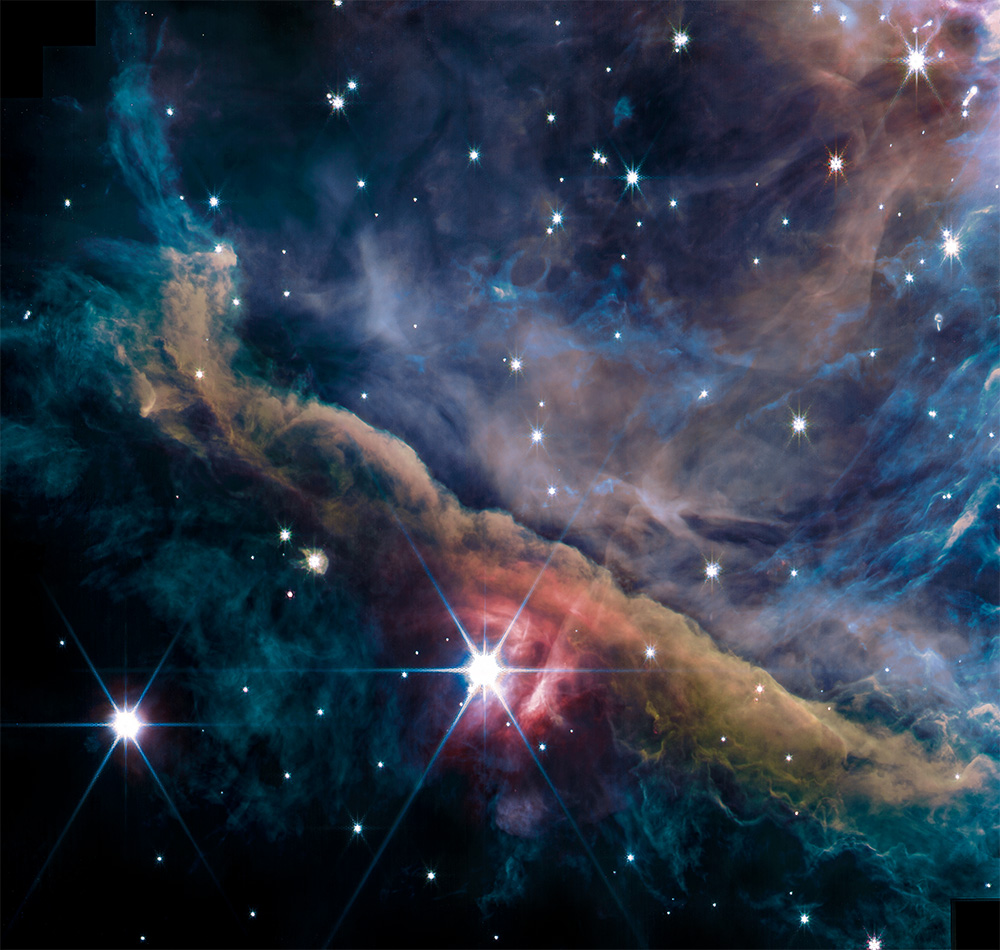
NASA / ESA / CSA; Data reduction and analysis: PDRs4All ERS Team; Graphical processing: S. Fuenmayor
The James Webb Space Telescope zoomed in on the Orion Nebula this week, sharing with us a clearer picture of the giant stellar nursery.
Even at 1,350 light-years away, the nursery is visible to our unaided eyes as a pale smear beneath the three-starred belt of Orion. It has been the target of many an amateur astronomer/astrophotographer, as well as the Hubble and Spitzer Space Telescopes. But Webb has provided the clearest and most unique picture to date, its Near-Infrared Camera peering through the dust that enshrouds the infant stars.
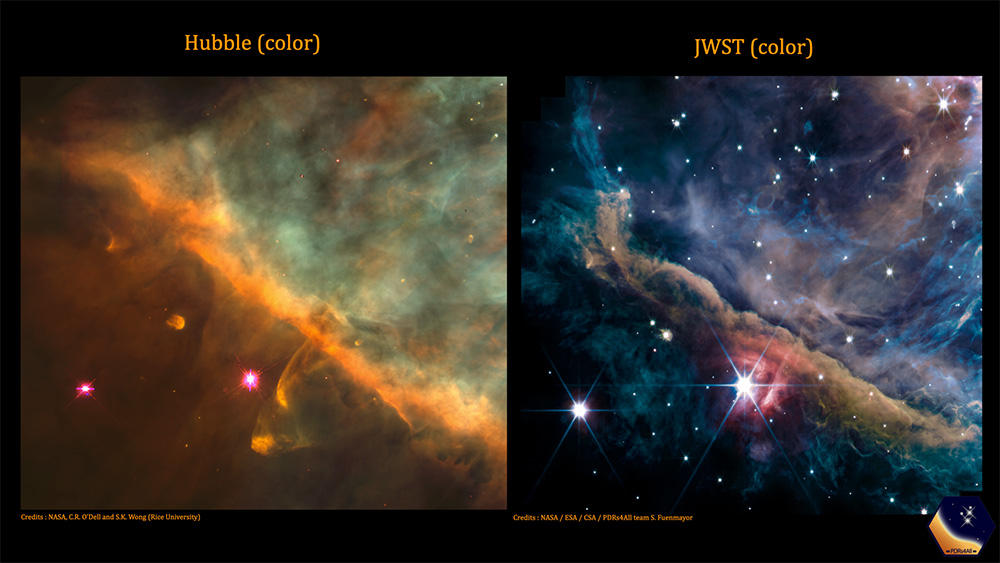
Webb image: NASA / ESA / CSA; data reduction and analysis: PDRs4All ERS Team; graphical processing: O. Berné; Hubble image: NASA / STScI / Rice Univ. / C.O’Dell et al.
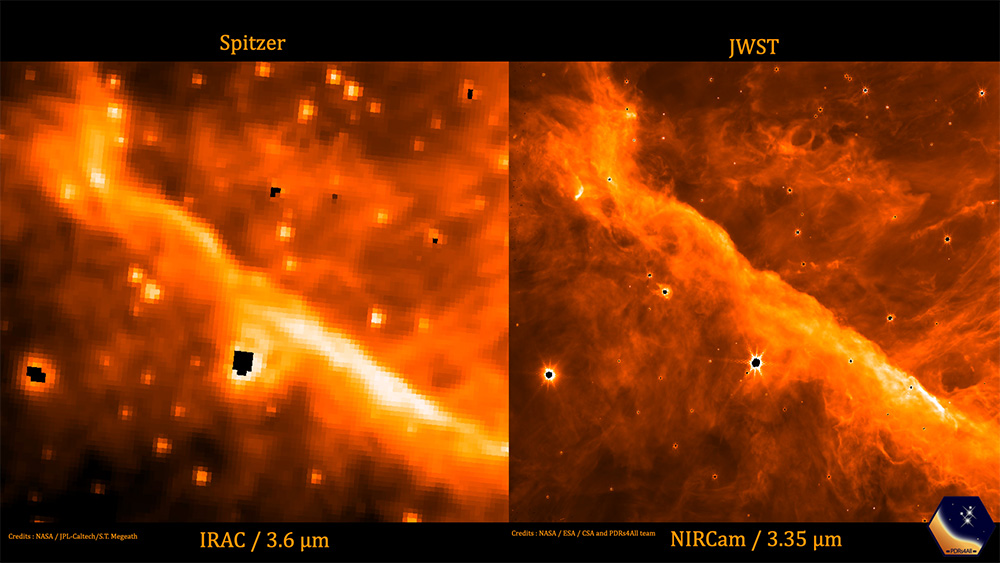
JWST image: NASA / ESA / CSA; data reduction and analysis: PDRs4All ERS Team; graphical processing: O. Berné; Spitzer image: NASA / JPL-Caltech / T. Megeath (Univ. of Toledo, Ohio)
Yet to many amateur astronomers, the image was at first is difficult to place. That's because most of the young, massive Trapezium stars — the cluster that's central to most Orion Nebula mosaics — sits just outside the upper right of the frame. Their light is what illuminates the gas and dust in the scene. (The Trapezium Cluster will be the subject of another Webb investigation.)
The brightest star within the image is θ2 Orionis A near the center. (If you're viewing it from the ground instead of with a powerful space telescope, then it's a binocular target — though you might see it unaided if you're under dark skies).
Across the center of the image is the Orion Bar, a dense wall of dusty gas that hosts new massive stars in the act of forming. Fuel flows into the bar from the gaseous filaments.
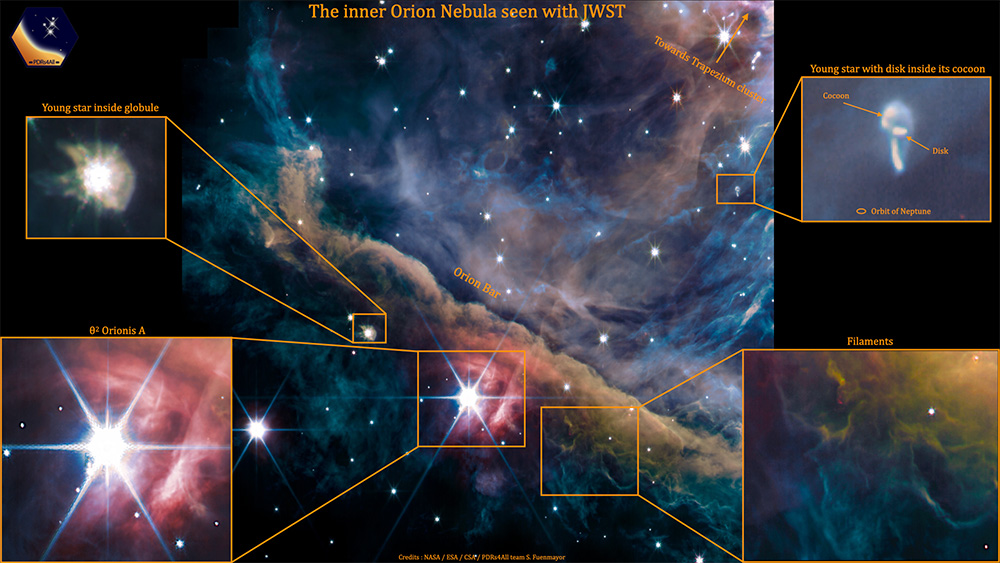
NASA / ESA / CSA; Data reduction and analysis: PDRs4All ERS Team; Graphical processing: S. Fuenmayor & O. Berné
The image combines light from several filters to represent hot (ionized) gas, cool (molecular) gas, hydrocarbons, as well as scattered starlight from massive stars. The details revealed span as little as 40 astronomical units, roughly the size of Pluto's orbit around the Sun.
The data, freely available via the JWST Early Release Science program, was taken for astronomers in the PDRS4ALL collaboration. PDR stands for photodissociation regions: the gas and dust that bakes in the intense ultraviolet radiation coming from young, hot stars. As infant stars pour out light, they dissipate the gas and dust around them. Watching this in action in the Orion Bar will provide a template for PDRs elsewhere in the galaxy, says Felipe Alarcon (University of Michigan), a graduate student and PDRS4ALL team member.
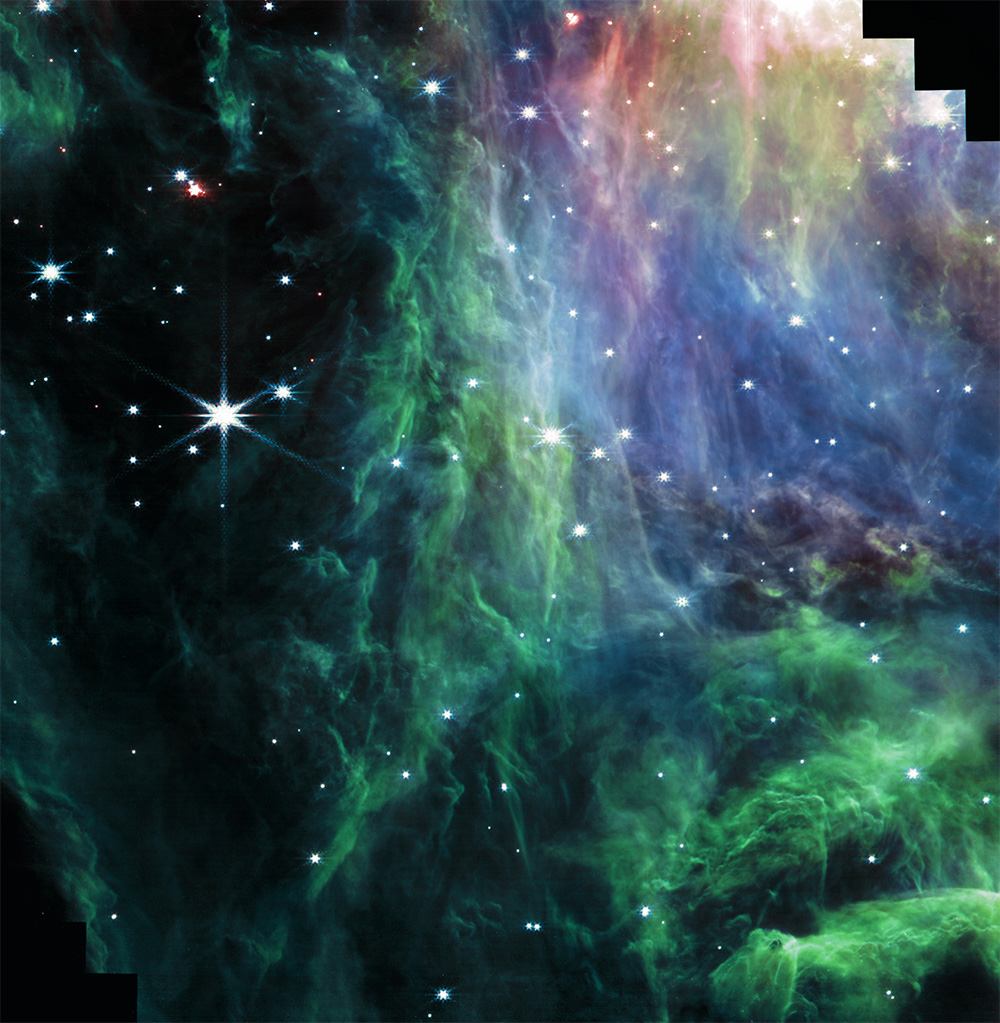
NASA / ESA / CSA / PDRs4All ERS Team; image processing: Olivier Berné
 2
2









Comments
Jen Willis
September 16, 2022 at 4:41 pm
Stunning images!
You must be logged in to post a comment.
Ronald-Parker
September 17, 2022 at 11:25 pm
I feel so privileged to have lived to see such heavenly wonders up close through the JWST. Many more will capture our imagination. Thank you for sharing!
You must be logged in to post a comment.
You must be logged in to post a comment.